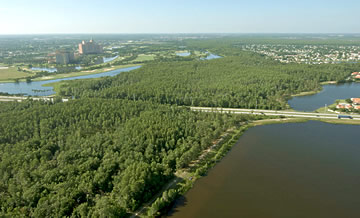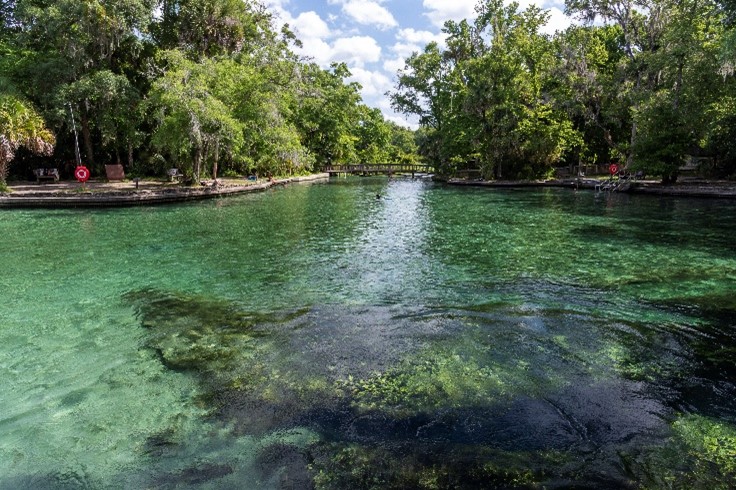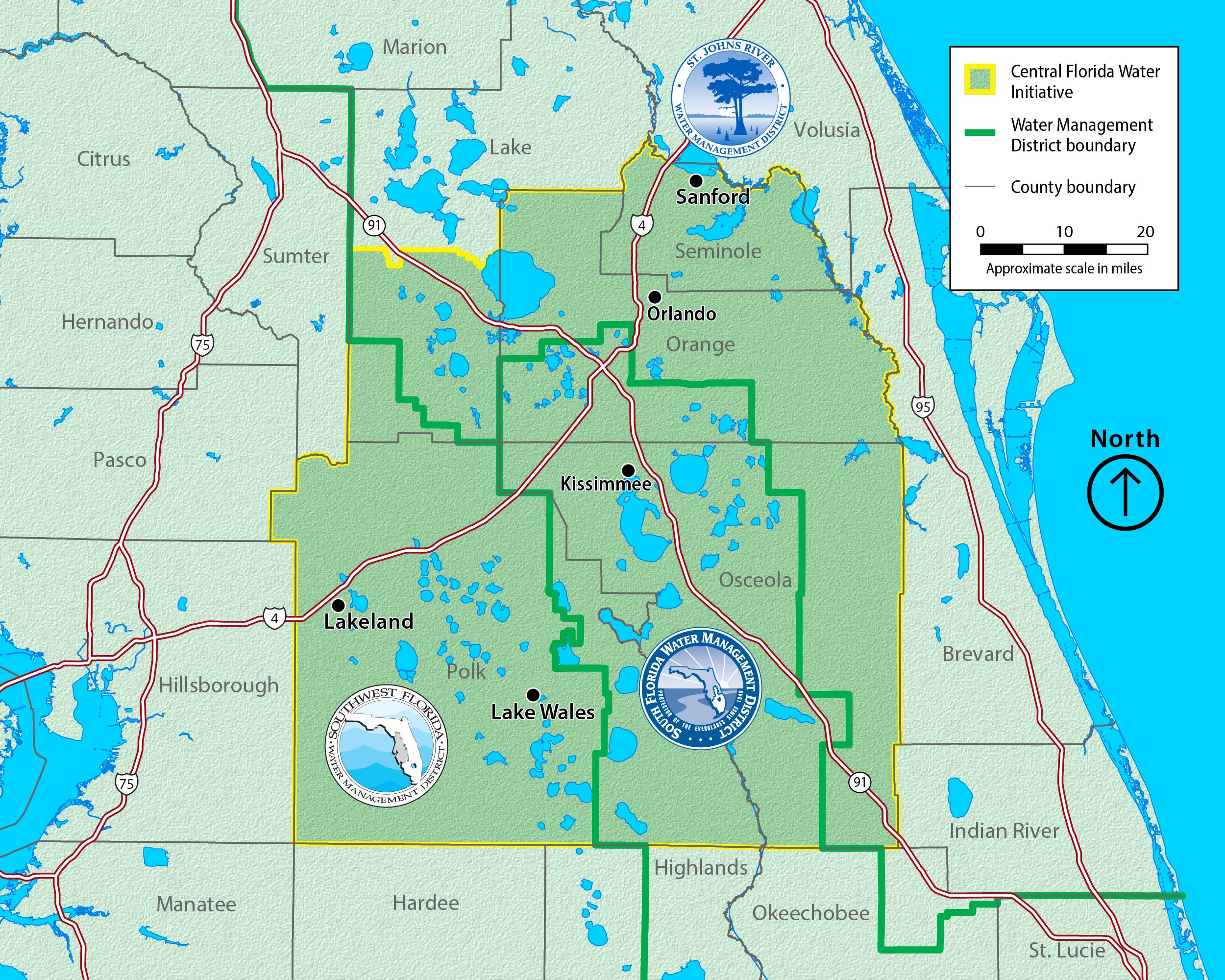What is the CFWI?
The Central Florida Water Initiative (CFWI) is a collaborative water supply planning effort among the state’s three largest water management districts, the Florida Department of Environmental Protection (FDEP), the Florida Department of Agriculture and Consumer Services (FDACS) and water utilities, environmental groups, business organizations, agricultural communities and other stakeholders.
The CFWI Planning Area covers five counties, including Orange, Osceola, Polk, Seminole and southern Lake. The boundaries of the St. Johns River, South Florida and Southwest Florida water management districts (Districts) meet in the area.
Background on the Central Florida Water Initiative
Historically, the Floridan aquifer system (FAS) supplied the vast majority of the water used in central Florida. The boundaries of three water management districts — the St. Johns River Water Management District, South Florida Water Management District and Southwest Florida Water Management District — meet in the CFWI Planning Area.
In the past, the three districts worked independently to resolve water resource issues, but the decisions of one district can impact the water resources of another. However, starting in 2011, Florida’s water management districts committed to finding new ways of meeting the demand for freshwater. Since that time, the three districts have determined the Upper Floridan aquifer has reached its sustainable limits in some areas and alternative water supplies must be developed to meet future water demands. The districts now work collaboratively with other agencies and stakeholders to implement effective and consistent water resource planning, development and management through the CFWI.

The Central Florida Parkway passes central Florida’s theme park region and communities
Goals
The goal of the CFWI is to ensure sufficient water supply sources and future projects to meet existing and future reasonable beneficial uses through 2045 (including a 1-in-10 year drought condition) while sustaining water resources and related natural systems. This goal will be accomplished by:
- Ensuring the sustainable quantities of fresh groundwater sources available for water supplies are used without causing unacceptable impacts to the water resources and associated natural systems
- Identifying water conservation savings, which may be achievable by water users during the planning horizon
- Identifying water supply and water resource development options to meet reasonable and beneficial water demands that are in excess of the sustainable yield of fresh groundwater sources
- Protecting, monitoring, and enhancing the environment, including the natural resource areas and systems
- Providing information to support local government comprehensive plans
- Achieving compatibility and integration with other state and federal regional resource initiatives
Water supply challenges

An example of development in the CFWI
Some of the water management challenges the CFWI is addressing include:
- Reaching sustainable groundwater limits
- Multiple demands on the area’s water resources
Fresh traditional groundwater resources alone cannot meet future water demands or current permitted allocations without resulting in unacceptable impacts to water resources and related natural systems.
Steering Committee
The CFWI is led by a steering committee comprised of representatives from:
- A public water supply utility
- A Governing Board member from each of the three water management districts
- FDEP
- FDACS

Wekiwa Springs State Park
